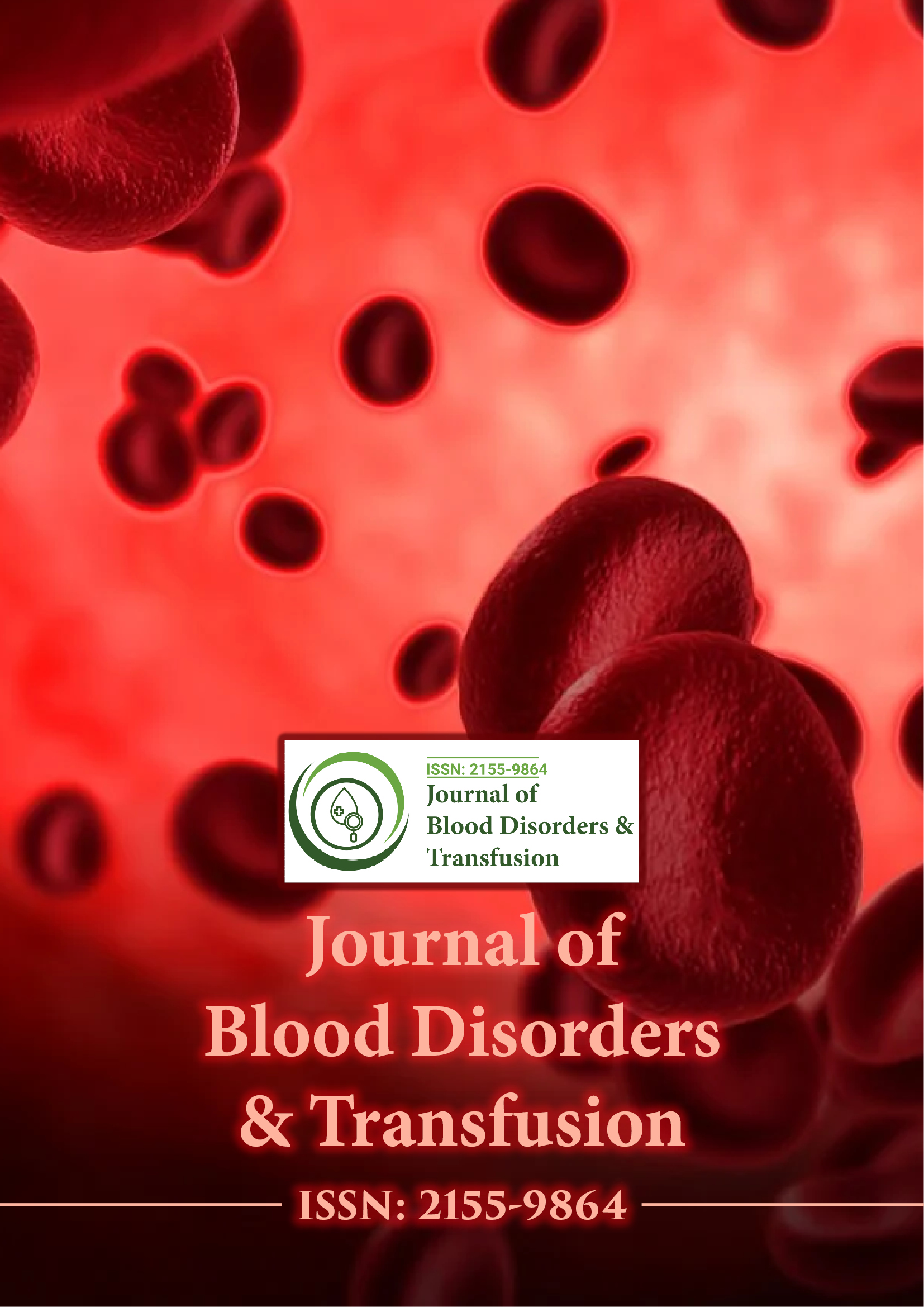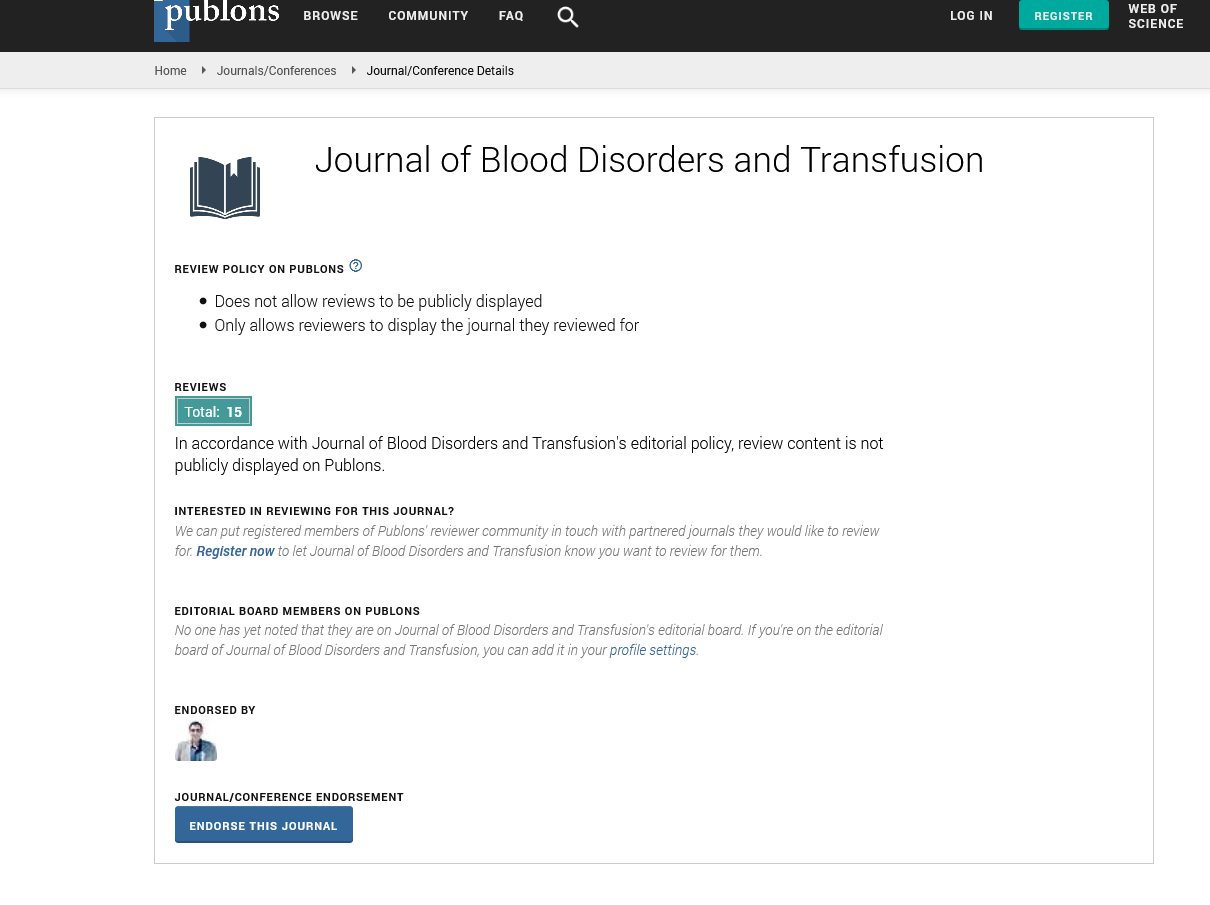Indexed In
- Open J Gate
- Genamics JournalSeek
- JournalTOCs
- Ulrich's Periodicals Directory
- RefSeek
- Hamdard University
- EBSCO A-Z
- OCLC- WorldCat
- Proquest Summons
- Publons
- Geneva Foundation for Medical Education and Research
- Euro Pub
- Google Scholar
Useful Links
Share This Page
Journal Flyer

Open Access Journals
- Agri and Aquaculture
- Biochemistry
- Bioinformatics & Systems Biology
- Business & Management
- Chemistry
- Clinical Sciences
- Engineering
- Food & Nutrition
- General Science
- Genetics & Molecular Biology
- Immunology & Microbiology
- Medical Sciences
- Neuroscience & Psychology
- Nursing & Health Care
- Pharmaceutical Sciences
Opinion Article - (2025) Volume 0, Issue 0
Diagnostic Tools for Hereditary Platelet Dysfunction
Francin Paola*Received: 28-Mar-2025, Manuscript No. JBDT-25-28992; Editor assigned: 01-Apr-2025, Pre QC No. JBDT-25-28992 (PQ); Reviewed: 15-Apr-2025, QC No. JBDT-25-28992; Revised: 22-Apr-2025, Manuscript No. JBDT-25-28992 (R); Published: 29-Apr-2025, DOI: 10.4172/2155-9864.25.S13.062
Description
Inherited Platelet Function Disorders (IPFDs) represent a group of rare congenital abnormalities that impair the ability of platelets to function effectively in hemostasis. Unlike quantitative platelet disorders, IPFDs are primarily characterized by defects in platelet adhesion, aggregation, secretion, or signal transduction. Accurate diagnosis of these conditions is essential to prevent mismanagement of bleeding symptoms and to guide appropriate therapeutic strategies. Laboratory evaluation is central to this diagnostic process, requiring a detailed and systematic approach.
Importance of diagnosis
Patients with inherited platelet function abnormalities often present with mucocutaneous bleeding, such as easy bruising, epistaxis, menorrhagia, or excessive bleeding after surgery or trauma. These symptoms can overlap with acquired bleeding disorders, making clinical differentiation difficult. A thorough clinical history, including family background and bleeding assessment scores, is essential in raising initial suspicion.
Early and accurate identification of IPFDs helps in managing bleeding risks during surgical procedures, determining the need for prophylactic treatments and providing genetic counseling. Since some IPFDs can mimic or coexist with other coagulation disorders, laboratory testing plays a critical role in establishing a definitive diagnosis.
Initial laboratory evaluation
Complete Blood Count (CBC) and Peripheral Smear: A routine CBC helps exclude thrombocytopenia, which may suggest an alternative or coexisting disorder. Platelet size, morphology and distribution should be examined under a microscope. Large platelets may suggest Bernard-Soulier syndrome or other macrothrombocytopenias, whereas small platelets are typical of Wiskott-Aldrich syndrome.
Prothrombin Time (PT): These assays assess the coagulation cascade and are typically normal in IPFDs. Abnormal results could indicate combined or misdiagnosed coagulation disorders.
Platelet Function Screening Tests
Platelet Function Analyzer (PFA-100/PFA-200): This automated system assesses platelet adhesion and aggregation under high shear conditions. Blood is aspirated through a membrane coated with collagen and either epinephrine or ADP. Prolonged closure times suggest defects in platelet function, von Willebrand Factor (VWF), or both. While sensitive, it lacks specificity and cannot identify the exact nature of the disorder.
Light Transmission Aggregometry (LTA): LTA remains the gold standard for diagnosing platelet function defects. It measures the ability of platelets in Platelet-Rich Plasma (PRP) to aggregate in response to various agonists, such as ADP, collagen, Thrombin Receptor-Activating Peptide (TRAP), epinephrine and arachidonic acid.
However, LTA is technically demanding, requires experienced personnel and may yield variable results depending on preanalytical conditions.
Electron microscopy
Transmission electron microscopy provides ultrastructural evaluation of platelet granules. It is particularly useful in diagnosing storage pool disorders, where dense granules are reduced or absent. Gray platelet syndrome is characterized by the lack of alpha granules, giving platelets a grayish appearance on blood smear and under electron microscopy.
Though highly specific, this technique is expensive, laborintensive and not widely available, making it a supportive rather than primary diagnostic method.
Genetic testing
Advances in molecular genetics have expanded the diagnostic capabilities for IPFDs. Targeted gene panels, Whole-Exome Sequencing (WES), or Whole-Genome Sequencing (WGS) can identify mutations in genes encoding platelet receptors, signaling proteins and granule-associated components.
Genetic testing is particularly valuable in cases where laboratory findings are inconclusive or when establishing a diagnosis in relatives. Identification of pathogenic variants confirms the diagnosis, aids in genetic counseling and may inform future therapeutic approaches.
Limitations include cost, turnaround time and the possibility of variants of uncertain significance. Thus, genetic results must be interpreted in the context of clinical and functional data.
Emerging techniques
Innovations such as microfluidic platforms, high-throughput omics technologies and machine learning applications are being investigated for their potential to enhance diagnostic precision. These approaches may enable more sensitive and specific identification of subtle platelet defects using minimal blood volumes.
The laboratory diagnosis of inherited platelet function disorders requires a comprehensive and methodical strategy. While clinical assessment initiates the process, definitive diagnosis depends on a combination of platelet function assays, flow cytometry, structural studies and genetic testing. Coordination among clinicians, laboratory scientists and geneticists is essential to achieve accurate diagnosis and effective management. Continued advancements in diagnostic technology and standardization efforts are expected to improve detection rates and support better patient outcomes.
Citation: Paola F (2025). Diagnostic Tools for Hereditary Platelet Dysfunction. J Blood Disord Transfus. S13:062.
Copyright: © 2025 Paola F. This is an open-access article distributed under the terms of the Creative Commons Attribution License, which permits unrestricted use, distribution, and reproduction in any medium, provided the original author and source are credited.

